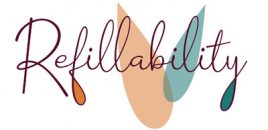In recent years, there has been a growing awareness about the impact of disposable products on our environment. One such product that has gained significant attention is the humble nappy. As parents, we strive to make choices that are both cost-effective and eco-friendly. Reusable nappies, have emerged as a sustainable alternative to their disposable counterparts. In this article, we will delve into the benefits of reusable nappies, focusing on their cost-effectiveness, environmental friendliness, and the staggering time it takes for disposable nappies to break down.
- Cost-Effectiveness:
One of the most appealing aspects of cloth nappies is their long-term cost savings. While the upfront investment may seem higher compared to buying disposable nappies, the overall cost is significantly lower. Consider this: The average baby in the UK will use around 4,000 disposable nappies before being potty trained. Each disposable nappy change adds to the ongoing expense. In contrast, a set of reusable nappies can be used for multiple children and often retain their value if well-maintained. By choosing cloth nappies, parents can save hundreds, if not thousands, of pounds throughout their child’s nappy-wearing years.
- Environmental Friendliness:
Disposable nappies contribute to a staggering amount of waste that ends up in landfills, approximately 2 billion nappies are being thrown away each year in this country (GOV.UK). Reusable nappies offer a solution by significantly reducing this waste. By switching to reusable nappies, it is possible to reduce a child’s carbon footprint by up to 40% (GOV.UK).
- Reduced Energy Consumption:
The production and distribution of disposable nappies require substantial amounts of energy and resources. From the manufacturing of the nappies themselves to the packaging and transportation involved, the environmental impact is considerable. In contrast, reusable nappies are a more sustainable option. While they do require water and energy for washing, advancements in eco-friendly detergents and efficient washing machines have made this process increasingly environmentally friendly.
- Longevity and Versatility:
Another advantage of reusable nappies is their durability. Unlike their disposable counterparts, cloth nappies are designed to withstand multiple uses. This durability often allows them to be passed down to younger siblings or sold second hand, reducing waste further. Additionally, reusable nappies come in various sizes and designs, ensuring a comfortable fit for babies of all shapes and sizes.
- The Alarming Reality of Disposable Nappy Breakdown:
Perhaps one of the most eye-opening aspects of disposable nappies is the time they take to decompose. It is estimated that it can take up to 500 years for a disposable nappy to fully break down in a landfill. This means that every single disposable nappy ever used still exists in some form. By choosing reusable nappies, parents can make a tangible difference in reducing the long-term impact on our environment.
Conclusion:
Choosing reusable nappies is a smart, eco-friendly, and cost-effective decision for parents. By opting for cloth nappies, we can significantly reduce waste, conserve resources, and lessen our carbon footprint. The financial savings and the long-term benefits for our planet make reusable nappies an attractive choice. So, let’s embrace this sustainable alternative and contribute to a cleaner, greener future for our children.

